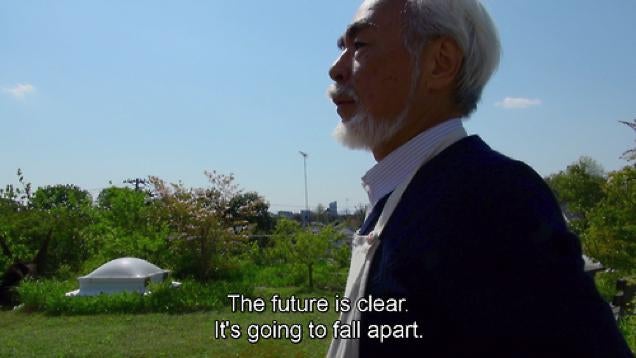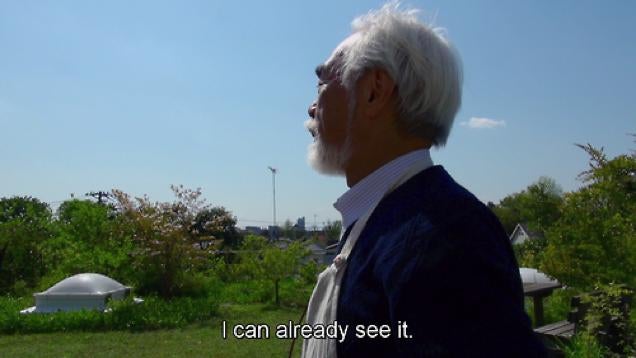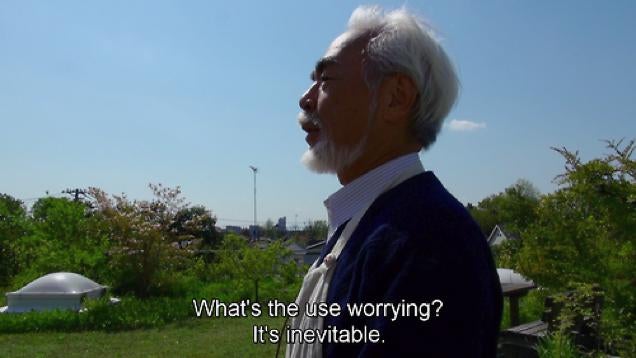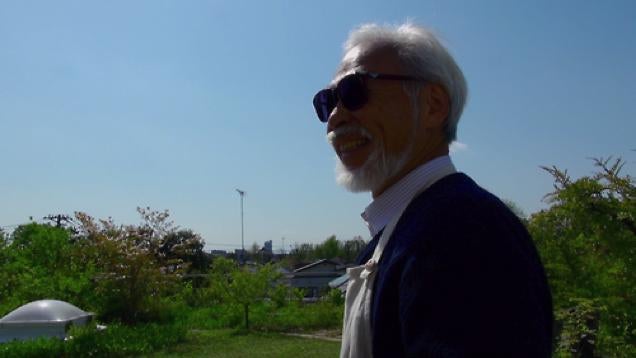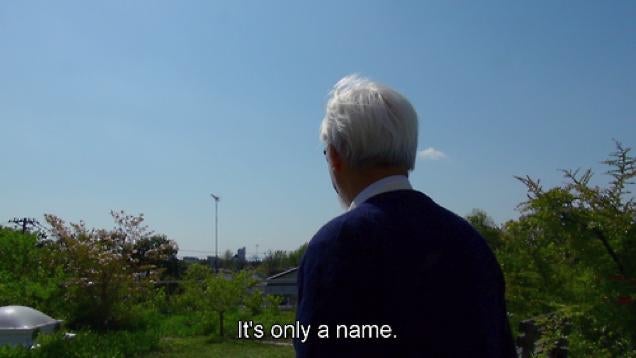
[Photograph: J. Kenji Lopez-Alt]

Note: All week, we'll be celebrating the wide, wonderful world of ramen here on SE. Stay tuned for a behind-the-scenes look at a noodle factory, guides to eating ramen around the world, a collection of instant ramen hacks, and oh so much more!
Hi, I'm ramen. You may remember me from such bowls as "First Dish I Learned to Cook On My Own," the ever-popular "Morning After Peach Schnapps-Fueled College Dorm Room Party," "Don't Tell Mom The Microwave Is Dead," or, one of my more subtle, emotional works, "Oriental Flavor."
Despite its popularity among the cash-strapped and the sodium-starved, the world or ramen extends far beyond the instant variety we grew up on. Originating in China, alkaline noodles served in soupy broth have been in Japan for well over a century, but like pizza in America, only became widespread after World War II. Troops returning from overseas had developed a taste for the stretchy noodles, and the inexpensive ingredients—wheat flour, bones, and vegetables—made them an attractive dish for restaurants to serve.
Nowadays, ramen is high in the running for national dish of Japan. Museums have opened dedicated to its history. The instant ramen noodle was voted as the greatest Japanese export of the 20th century in a national poll (placing ahead of karaoke machines, walkmen, and Kurosawa films). And, just as with pizza in the U.S., regional styles and specialties abound with soups, noodles, and toppings, all varied according to local tastes, ingredients, and cultures.
I'm not going to even pretend that a comprehensive style guide of all the ramen out there is possible, but we'll do our best to give you something to noodle over.
The Broths
You often see ramen categorized into four classes: shio (salt), shoyu (soy sauce), miso (fermented bean paste), and tonkotsu (pork), which doesn't make particular sense, as the first three are flavorings, while the fourth is the broth base. It's sort of like saying "there are four basic types of pizza: Neapolitan, Sicilian, New York, and pepperoni."
While it's true that even in Japan, some folks see those four classes as distinct styles, there are plenty of cases where there are overlaps and outliers. For instance, what would you call a creamy, opaque, heavy ramen that's made entirely with chicken bones? It doesn't fall neatly into any of those categories, but it certainly exists.
Instead, it makes much more sense to categorize ramen broth first by its heaviness, then by the soup base ingredients, and finally by the seasoning source. This classification system, used by some Japanese sources, can be combined to cover pretty much every bowl of soup-based ramen in existence.
Classification by Heaviness

A bowl of assari shio ramen. [Photograph: Brian Oh]
Heaviness is classified as either kotteri (rich) or assari (light). Kotteri broths will be thick, sticky, and usually opaque, packed with emulsified fats, minerals, and proteins from long-boiled bones. Opaque white bone broths are also known by their transliterated Chinese name, paitan. Assari broths are clear and thin, usually flavored with more vegetables, fish, or bones cooked relatively briefly at a light simmer so as not to cloud the broth.

A bowl of kotteri Sapporo-style ramen [Photograph: J. Kenji Lopez-Alt]
It's a sliding scale bordered on the kotteri side by Sapporo-style miso ramen that comes served with a pat of butter; and on the assari side with the lighter, clear seafood soups of Hakodate.
Classification by Broth Base

[Photograph: J. Kenji Lopez-Alt]
The broth base is the main ingredients simmered to make the soup. This can range from animal bones—pork, chicken, beef, and fresh fish being the most common—to even lighter broths made with sea kelp or or dried seafood. In addition to their main ingredient, ramen broths incorporate a variety of aromatics, such as charred onions, garlic, ginger, fresh scallions or leeks, and mushrooms.

A kotteri chicken broth [Photograph: J. Kenji Lopez-Alt]
The most widely recognized and celebrated broth worldwide these days is tonkotsu, a boiled pork bone broth. The best tonkotsu broths are a milky, golden color and leave a sticky sheen of gelatin on your lips as you slurp them.
Check out our recipe for Tonkotsu Ramen Broth here.
Classification by Seasoning
The seasoning is the main salt source used to flavor the soup. It can be mixed directly into the soup base, but in many ramen shops, it's added to each individual bowl, making the menu a bit more customizable. The most common seasonings are:

[Photograph: Jiri Hera/Shutterstock]
Shio: Sea salt is the oldest form of ramen seasoning, and derives from the original Chinese-style noodle soups. Shio ramen is popular in Hakodate, a southern city in the Hokkaido prefecture where strong Chinese ties influence local cuisine, but the weather is still mild enough for lighter, salt-based soups to flourish.

[Photograph: J. Kenji Lopez-Alt]
Shoyu: Japanese soy sauce is a popular ramen seasoning in the Kanto region of central Japan, originally emanating from Yokohama. Traditionally it's paired with clear to brown chicken, seafood, and occasionally pork or beef-based broths, though these days shoyu is used willy-nilly by ramen chefs throughout Japan. It's very common to see creamy tonkotsu pork broths flavored with shoyu, for instance.

[Photograph: J. Kenji Lopez-Alt]
Miso: Miso ramen is the youngest form of ramen, having gained popularity only in the mid 1960's and originating from Northen Hokkaido, where cold weather demanded a bolder, heartier bowl of soup. Its youth has not stymied its popularity, and it can now be found all over Japan and the rest of the ramen-eating world, most often paired with heavier, more robust, and unique toppings like sweet corn or stir-fried pork belly and bean sprouts.
While in general, shio tends to be used to season ramen on the assari end of the scale and miso for the kotteri with shoyu somewhere in the middle, exceptions abound, and it's not uncommon to find rich bone broths flavored with plain salt or lighter seafood broths paired with miso.
With these categories, we can classify pretty much any bowl of ramen we come across. For instance, the creamy chicken paitan ramen at New York's Totto Ramen would be considered a kotteri ramen made with a chicken broth base and flavored with shoyu, while the shio ramen at Yebisu would be an assari, sea-based broth flavored with salt. Get it?
Oils and Other Seasonings
Some ramen shops will finish a bowl of ramen with a small ladleful of flavorful oil or fat—Clarified pork fat of various chili or sesame oils, for instance. More esoteric broth flavorings such as tahini-style sesame paste or powdered smoked and dried bonito can also be found. And of course, MSG usage is common—the Japanese don't have the same hang ups about it as we do here in the States.
The Noodles

Straight, thin noodles [Photograph: J. Kenji López-Alt]
There are more types of noodles in Japan than there are shapes of pasta in Italy. Okay, I don't know if that's 100% true, but it sure seems that way. Whether straight, thin, and narrow, thick and wavy, or wide and flat, ramen chefs will select noodles based on their bounciness, their ability to cling to broth, and their texture in the mouth, searching for a noodle that interacts harmoniously with the soup in the bowl.

Thick, wavy noodles [Photograph: J. Kenji Lopez-Alt]
Serious ramen chefs are notoriously militant about noodle-eating etiquette. They say that perfect noodles will only last for five minutes after they are added to the hot broth—any longer than that and they become overcooked and mushy—so as a patron, it's your duty to start eating as soon as the bowl is delivered and not stop until you're finished; Hence the wild slurping you'll find in a typical Japanese ramen shop. Order ramen to go and you'll get your noodles on the side, intended to be added to the reheated broth when you get it home—that is, if the ramen shop even allows to-go orders. Many refuse.
Still hungry after you're done slurping? Ask for kaedama, an extra serving of noodles to be added to the leftover broth in your bowl.
Some noodle classification is in order.
To begin with, let's define exactly what a ramen noodle is. Originating from China, ramen-style noodles are made with wheat flour, salt, water, and kansui, an alkaline water which gives the noodles their characteristic bounce and their yellowish hue. While it's possible to find noodles made with eggs in place of the kansui, this is far more common in China than it is in Japan.

Thin straight noodles and thicker wavy noodles [Photograph: J. Kenji López-Alt]
Fresh noodles are the norm for high-end ramen shops. While size and shape vary, you'll typically see thin, straight noodles paired with hearty tonkotsu-style broths—the noodles cling together and hold soup in via capillary action, delivering plenty of hearty pork flavor with each slurp—while wavy noodles tend to be paired with miso-flavored ramens, their waves capturing the nutty bits of fermented soy bean. Shio and shoyu-flavored lighter soups can get any type of noodle and the selection varies widely by region.
Just as spaghetti is not inherently better or worse than tagliatelle, trying to declare one style of noodle—thin and straight or thick and wavy—as the best is a futile effort.
Dried Noodles are made by drying fresh, uncooked noodles and are an excellent choice for home cooking, though they're occasionally used in restaurants as well (but you're much more likely to find more traditional Japanese-style noodles such as udon, somen, and soba in dried form than Chinese-derived ramen). Generally, with dried noodles, the thinner and straighter they are, the better they reconstitute.

Cheap de-fry-drated noodles on the left, fancy air-dehydrated noodles on the right. [Photograph: J. Kenji Lopez-Alt]
Instant Noodles were invented in 1958 by Momofuku Ando and were most likely your very first introduction to the world of ramen. What hungry college student hasn't nursed themselves out of a hangover over a 59¢ bowl of instant ramen? The most common method of production is to deep-fry par-cooked bricks of noodles to dehydrate them (aka "de-fry-drating"). Take a look at the fat content on a pack of inexpensive instant ramen. That all comes from the dehydrating process.
Higher-end instant noodle brands, such as Myoja Chukazanmai, are made by air-drying par-cooked noodles, resulting in an end product that's costlier to produce, but far more similar to traditional ramen.
The Toppings
Toppings on bowls of ramen are more than an afterthought. For many shops, it's their defining characteristic. Toppings can vary from simple vegetables and seasonings to far more complex meats and sauces that must be prepared separately and in advance. Here are some common ones you might find.
Meat

Chashu pork belly [Photograph: J. Kenji López-Alt]
Chashu pork is by far the most popular ramen topping. Though the name is derived from the Chinese char siu roast pork, the Japanese version is made by simmering pork in a sweet soy and mirin sauce until it's fall-apart tender. Pork loin is common, but I prefer the kind made with fatty pork belly. You can see my own recipe for chashu here.
Kakuni is similar to chashu in that it's simmered pork belly, but this version comes in chunks and is modeled after the Chinese method of red braising.

Bacon and cabbage ramen [Photograph: J. Kenji Lopez-Alt]
Bacon can be sliced and added to the simmering broth, or stir-fried briefly before topping the bowl.

Crispy shredded pork [Photograph: J. Kenji Lopez-Alt]
Shredded Pork made by braising pork shoulder then pulling and shredding the meat has become increasingly popular—it's what David Chang uses to top his bowls at Momofuku. For my own take, I like to crisp up the shreds of pork shoulder carnitas-style before topping the bowl.
Get the recipe for Miso Ramen with Crispy Shredded Pork here!
Ground Meat is usually stir-fried with other ingredients like bean sprouts or cabbage before it's added.

Shrimp, scalliops, and mussels in a bowl of ramen [Photograph: J. Kenji Lopez-Alt]
Seafood such as scallops, shrimp, mussels, and crab are simmered gently and paired with lighter, sea-flavored broths.
Kamaboko is the familiar white and red fish cake that comes sliced on top of sea-flavored ramen. When it's formed into a spiral shape, it's called narutomaki.
Eggs

Ajitsuke Tamao [Photograph: J. Kenji Lopez-Alt]
Eggs and ramen go hand in hand like Bert and Ernie. It's hard to imagine one without the other. A good soft boiled or poached egg is my favorite way to jazz up a bowl of instant ramen at home.
Boiled Eggs are easy, filling, and last a long time. If you want your eggs soft boiled, ask for them hanjuku. (Just don't ask for that in a Japanese manga shop or you will get something entirely different.)
Ajitsuke Tamago, which literally means "applied seasoning egg," is a soft boiled egg which has been marinated for several hours in a soy sauce and mirin solution. They come out lightly salty and sweet with a golden, liquid yolk. They're very easy to make at home and make a great snack. Check out my recipe here.

Onsen tamago served with furikake and soy sauce [Photograph: J. Kenji López-Alt]
Onsen Tamago are soft cooked eggs that were originally made in the onsen (hot springs) of Japan. These days you're more likely to find them coming out of high-tech sous-vide style water ovens. By slow-cooking eggs at around 140 to 145°F, you end up with a white that's barely set into custardy tenderness and a yolk that's still liquid and runny, perfect for stirring into your soup for extra richness.
Fresh Vegetables

[Photograph: J. Kenji Lopez-Alt]
Scallions: If eggs are the Ernie to Ramen's Bert, then scallions are the Jim Henson—the driving force that powers them and bring out their best qualities. No bowl of ramen is complete without a showering of finely sliced scallions. Even the most inexpensive bag of instant ramen will contain dried scallions in its seasoning packet.
Cabbage is a quick, easy, and inexpensive way to bulk up a bowl of ramen and add some modicum of nutritional value in the process. It can be shredded or cut into large squares and is generally stir-fried or simmered before being added to the bowl.
Corn is a popular addition in Japan, particularly in the northern prefecture of Hokkaido, where simmered corn and butter are used to top bowls of miso-based ramen.

[Scallions Photograph: J. Kenji Lopez-Alt]
Enoki mushrooms are added raw to the tops of bowl, then soften a bit in the heat of the broth, adding a sweet, mild earthiness.
Fresh garlic can be added in grated form.
Spinach is not too common in restaurants, but is a popular choice for time-strapped home cooks who want to bulk up their instant noodles.
Stir-fried vegetables are generally paired with robust miso ramens and can include everything from cabbage and carrots to bean sprouts and onions.
Preserved Vegetables
Menma is lacto-fermented bamboo shoots. Chinese in origin, with a nutty, slightly sweet flavor.

Wood ear mushrooms [Photograph: J. Kenji Lopez-Alt]
Wood Ear Mushrooms are a dehydrated fungus that is then rehydrated and sliced. They're rather bland in flavor but add a nice crunchy texture to the bowl.

Kimchi [Photographs: J. Kenji Lopez-Alt]
Kimchi is increasingly popular as a topping, particularly for home-made instant ramen. I like to add a bit of the kimchi juice along with the actual cabbage.

Nori [Photograph: J. Kenji Lopez-Alt]
Nori is sheets of dried and compressed laver, a type of seaweed. It's the same stuff used to wrap sushi rolls. It can be shredded and sprinkled on top of the bowl, or left as a larger sheet and stuck to the side of the bowl, adding subtle aroma and something to crunch on between bites of soup.
Wakame is another type of seaweed that you've probably eaten in bowls of miso soup. It's used almost exclusively to garnish bowls of shio ramen, where it adds an ocean-y aroma and a slippery texture.
Beni shoga is pickled ginger cut into thin shards. Bright red or pink in color, it tends to be sharper in flavor than the pickled ginger you'll find accompanying your sushi, and is paired almost exclusively with tonkotsu broth.
Condiments and Spices
Whether aded in the kitchen or served at the table, spices and condiments are the final layer of flavor in a bowl of ramen.

[Photograph: Max Falkowitz]
Togarashi is Japanese chili powder. It typically comes in two forms. Ichimi togarashi is straight-up ground hot roasted chili, while shichimi or nanami togarashi is a spice blend made with chili, dried orange peel, sesame seed, nori, hemp, sansho (Sichuan) pepper, and ginger. It's sprinkled on tableside.
Sansho pepper is the Japanese version of the mouth-numbing aromatic Sichuan peppercorns from China. It's more common as a condiment for broiled eel, but you'll occasionally find it on the table at ramen shops.
Yuzukosho is a spice paste made with salted chili peppers and the rind of the yuzu, a japanese citrus fruit. It's used to flavor light broths and is usually added in the kitchen.
Black or white pepper.
Sesame seed pair very well with the nutty flavor of miso ramen. They can be added whole, or they can be finely ground in a mortar and pestle to incorporate more smoothly into the soup.
Ninniku-dare is a garlic past made by whipping together grated garlic and pork fat. It's got a milder flavor than straight-up grated garlic, and adds some nice, tasty fat to the bowl.
Curry powder or paste is stirred directly into ramen broth before adding the noodles. Japanese curry paste is based vaguely on Madras-style Indian curry mixes, but is catered to the Japanese palate. It adds body and spice to the broth. We recently come across a shop that incorporates Thai chili paste into their ramen in New York.

Black garlic oil [Photograph: J. Kenji López-Alt]
Mayu is made by slow-cooking garlic in sesame oil until it's completely black, then blending it. The flavor is slightly bitter, sweet, and rich. For our own version, we cook the garlic first in neutral canola oil before blending in the sesame to help achieve a lighter, less bitter flavor.

Butter Ramen [Photograph: Wikimedia Commons]
Butter is added in cold pats to miso ramen in northern Japan.
Regional Japanese Ramen Variations
Trying to classify every regional Japanese ramen variation is like trying to draw a functional timeline for Back to the Future. There are so many twists, variations, and incestuous borrowings going on that trying to build a comprehensive list becomes an exercise in futility.
For the casual ramenologist, there are only three that you've got to know if you want to sound all intellectual as you slurp: Tokyo, Sapporo, and Hakata style.
Tokyo Ramen

Tokyo style ramen [Photograph: Brian Oh]
Tokyo ramen is made with pork and chicken broth and features slightly curly, moderately wide noodles. Very often in Toyko you'll find broths that are flavored with dashi, a broth made from dried smoked bonito flakes and sea kelp. This dashi-chicken hybrid is a cross-breed of Chinese-style soup broths with the lighter Japanese broths used in traditional Tokyo soba (buckwheat noodle) shops.
The bowls are generally seasoned with shoyu and are medium-bodied. Up until the recent popularity boom of tonkotsu ramen, Tokyo-style pork and shoyu ramen was probably the most widely known world-wide.
It's a kissing cousin of Yokohama ramen, which comes from across Tokyo bay. Yokohama's broth tends to be heavier, with a more meat-forward profile than the dashi flavors found in Tokyo ramen.
Sapporo Ramen

Sapporo style ramen [Photograph: Brian Oh]
Sapporo ramen comes from Japan's northernmost province of Hokkaido, the birthplace of miso ramen. Though its history as a ramen center hasn't yet hit 50 years, it's become one of the most widely influential styles. You'll find Sapporo-style miso ramen, with thick, robust noodles, all over Japan, from the ramenya of Tokyo down to the south in Kyushu.

Stir-frying toppings for Sapporo ramen [Photograph: Brian Oh]
Made with a rich chicken, fish, or pork broth, the soup is flavored with akamiso (red soybean paste) and commonly topped with stir-fried bean sprouts, cabbage, sweet corn, and ground pork. Hearty slices of chashu and soft boiled eggs are widely available as well. If you want to go extra-Sapporo, get a slice of butter.
Hakata Ramen

Liquid pork: Hakata style ramen [Photograph: J. Kenji Lopez-Alt]
Hakata Ramen comes from Fukuoka, a prefecture in Japan's southern island of Kyushu famous for its pork dishes. Hakata is the home of tonkotsu, the no-holds-barred meatsplosion of porcine pleasure. While many ramen broths are gently simmered to develop nuanced, subtle flavors, tonkotsu broth is cooked at a rolling boil, giving the soup its rich body, opaque appearance, and rich texture. It's insanely popular and was the primary driver of the ramen boom in New York over the last decade or so. Fukuoka, of course, is the birthplace of the widely popular Ippudo chain of ramen-ya.
In Hakata, the tonkotsu broth is generally seasoned with shio, in order to preserve the milky white color of the soup, though both shoyu and miso variations are not uncommon. Some shops will serve shoyu tare (a seasoned soy sauce mixture) as a table side condiment. Typical toppings include thin slices of chashu, wood-ear mushroom, beni-shoga, and spicy mustard greens—all powerfully flavored or textured stuff that can stand up to the intense pork flavor. Crushed sesame seed and crushed garlic can be served table side to add to taste.

Tonkotsu ramen with mayu [Photograph: Brian Oh]
Drizzle some mayu into a bowl of Hakata ramen and you've traveled one prefecture south to Kumamoto.
Want to dive deeper into the ramen family tree? Check out the Rameniac's guide for a look at 19 other distinct regional ramen styles in Japan. It's one of the best ramen sites out there.
Other Ramen-Like Dishes in Japan and Abroad
While noodles in soup continues to be the standard form of service, there are many other noodle dishes in Japan and around the world that have their roots in ramen, some of them quite old. Here are just a few of the more interesting and popular ones.

Abura soba [Photograph: J. Kenji Lopez-Alt]
Abura soba, or "oil noodles," is a soup-less dish consisting of cooked ramen noodles dressed with flavored oil and tare, a seasoned sauce that is generally soy based. It often comes topped with an egg, with the intent that you stir everything together in the bowl to form a creamy, emulsified sauce. Japanese carbonara, if you will.

Maze-men [Photograph: J. Kenji Lopez-Alt]
Maze-men, or "mixed noodles," is the new kid on the block, a specialty of Tokyo's (and soon to be New York's) Ivan Ramen. Similar to Abura soba, it's cooked noodles served with a small amount of strongly flavored sauce, sort of like Italian-style pasta dishes. Toppings and sauces vary wildly, and are often experimental in nature, like the cured salmon and camembert maze-men served at New York's Yuji Ramen

Tsuke-men [Photograph: Jay Friedman]
Tsuke-Men "dipped noodles" is a popular alternative to ramen, particularly during warmer summer months when a piping hot bowl of noodles isn't exactly appealing. With this form, the noodles come served separately on the side so that they cool slightly. You dip the noodles into a bowl of broth as you eat, pausing between bites to grab at the toppings. If the noodles are served cold on a bamboo mat in the style of soba, they're called zaru ramen.

Ramen orecchiette [Photograph: J. Kenji Lopez-Alt]
Ramen pasta is brand spanking new, and as far as we know, served only in one location: at Yuji Ramen in New York. The concept is to use a ramen-style alkaline water dough and shape it into Italian pasta shapes, paired with sauces inspired texturally by Italian sauces, but using Japanese ingredients and techniques. The result is wildly creative dishes like the squid bolognese ramen orecchiette above.

Tantan-men [Photograph: Nick Kindelsperger
Tantan-Men is the Japanese interpretation of Sichuanese dan dan noodles. Based on a pork broth, it comes with a scoop of heavily spiced ground pork and is generally served with spinach or bok choy.

Hiyashi chuka [Photograph: Roger Kamholz]
Hiyashi Chuka translates directly as "cold Chinese" and is a dish made with cold ramen noodles with various toppings including sliced omelet, ham, cucumber, carrot, and chicken, dressed in a light vinegar and soy-based sauce.

Chanpon [Photograph: Wikimedia Commons]
Chanpon is sort of the weird cousin to ramen that the rest of the family members don't like to talk about. It comes from Nagasaki and is made by boiling thick noodles directly in a viscous soup made from pork and seafood. It's considerably thicker and more stew-like than regular ramen.

Yakisoba [Photograph: Wikimedia Commons]
Yakisoba is the Japanese version of Chinese fried noodles. It's made with egg noodles stir-fried with a few vegetables and occasionally meat and seafood, all flavored with a Worcestershire-style vegetable and anchovy sauce. It's often topped with shaved bonito flakes and benishoga.
And Beyond!
Despite the fact that we've gone almost 7,000 words deep into this guide, we're really just scratching the tip of the iceberg. New ramen styles are constantly being invented, and newer, wackier flavor combinations are ever on the horizon (check out a few of our instant ramen hacks for a taste of what we've got out there).
We'll try and keep this guide as updated as possible, but give the enormity of that task, we'll continue to rely on you, the Serious Eats community, to keep pointing us towards delicious new finds. Let us know if we've missed anything important!
About the author: J. Kenji Lopez-Alt is the Chief Creative Officer of Serious Eats where he likes to explore the science of home cooking in his weekly column The Food Lab. You can follow him at @thefoodlab on Twitter, or at The Food Lab on Facebook.
Original Source























